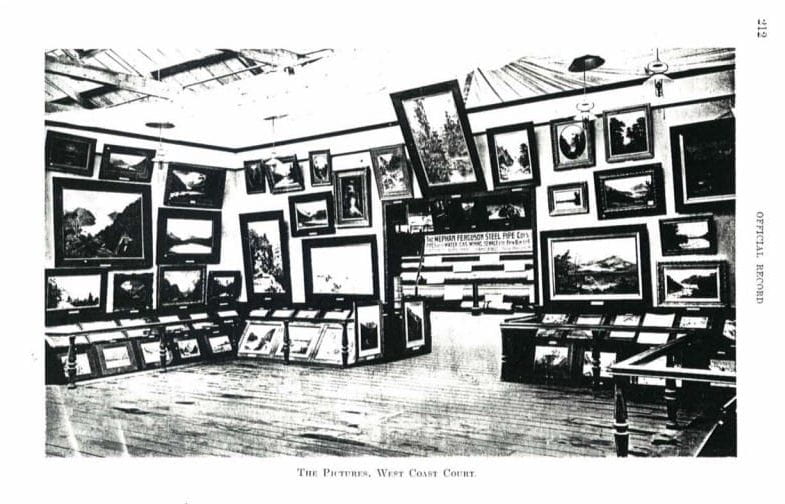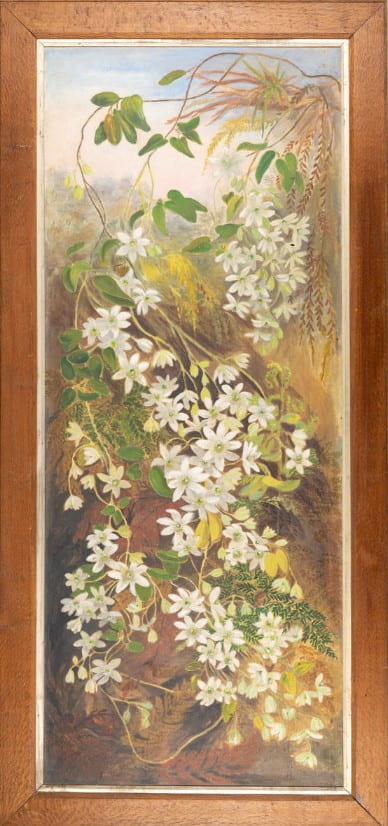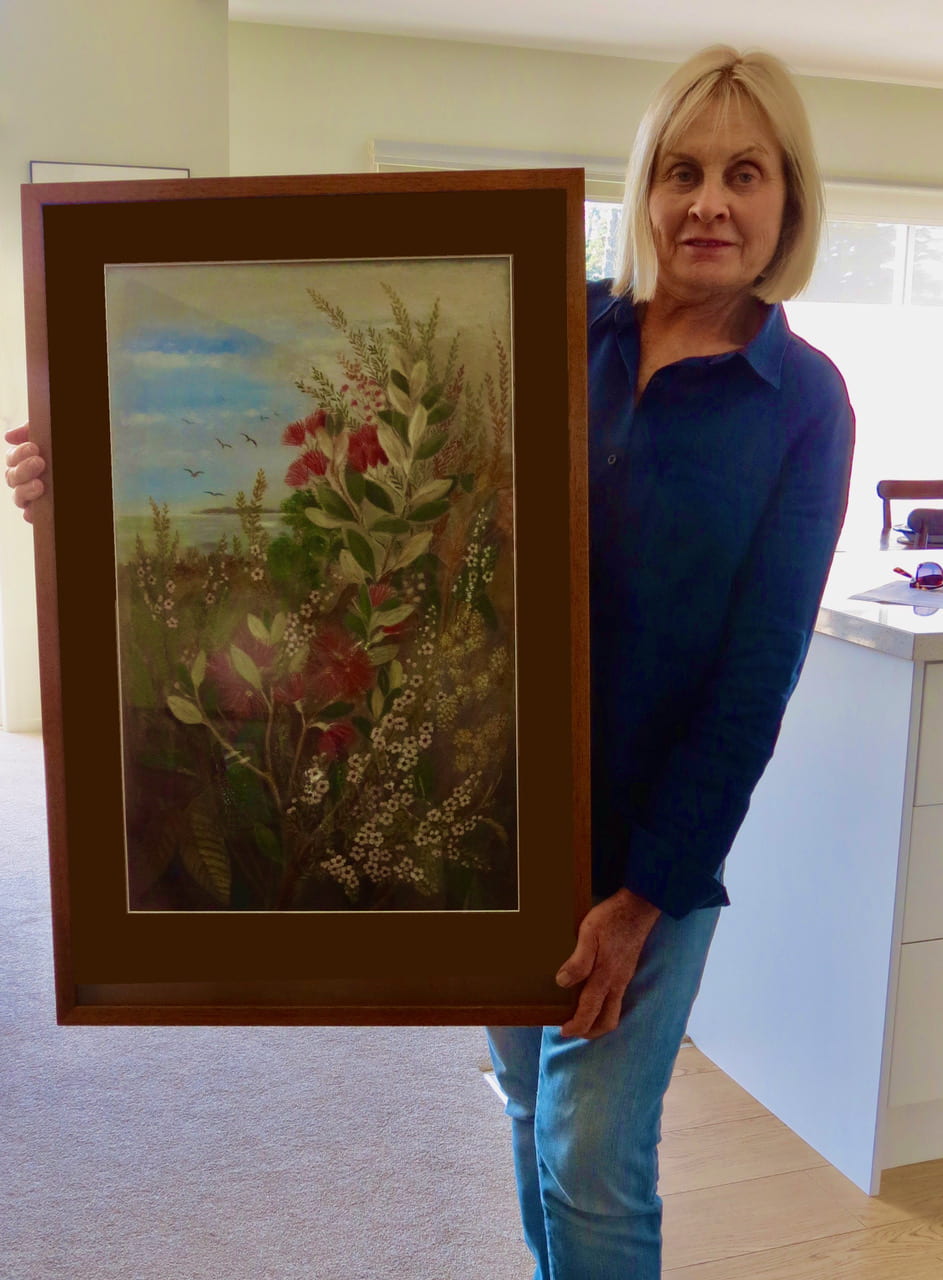By Catherine Field-Dodgson
Recently we have been looking into the twelve large flower studies in oil that Emily Harris painted for the 1906-07 New Zealand International Exhibition in Christchurch.
The Christchurch International Exhibition was an expansive display of nationalism: a way to promote tourism, products and a sense of colonial New Zealand identity to the world. Large-scale exhibition buildings were purpose-built and filled with provincial ‘courts’, which displayed products such as plants, minerals, timbers, machinery, models and artworks to best advertise the different regions. The Department of Tourists and Health Resorts Court even featured a replica geyser, hot pools and children who dived for pennies. Outside in the grounds of Hagley Park, exhibits included a helter-skelter, water chute, three seals and a sea lion, penguins and a replica Māori pā named Te Āraiteuru, full of inhabitants. Nearly two million people visited the exhibition from November 1906 to April 1907.
The West Coast Court was full of mineral specimens like greenstone, gold and coal, but it also featured an entire room full of paintings and photographs. Mr George John Roberts (1848-1910) was the Executive Commissioner for the West Coast Court, and he was determined to make it memorable. By January 1906, Roberts had “already received promises from all over the Colony to forward pictures of the West Coast. He intended writing to the New Zealand artists who had visited these parts to forward their pictures for exhibition.”(Grey River Argus 25 Jan 1906: 3). Emily was one of the artists he approached. A local paper reported her contributions, while spelling her surname incorrectly: ‘Amongst the pictures are some fine works by such artists as Blomfield, Moultray, Worsley, Christmas and Miss Marris, of Nelson, has some fine pictures of West Coast flowers.’ (Grey River Argus 6 Nov 1906: 1) The West Coast Court’s picture gallery must have been impressive to walk through, with the official exhibition record noting that: ‘The walls glowed with colours that brought before one some of the most remarkable and wild scenery of this tenuous province jammed betwixt Alp and ocean.’ (James Cowan, Official record: 211)

As well as providing a collection of paintings for the West Coast, Emily painted two panels of sub-Antarctic flora that were displayed in the Nelson Court. All of her paintings were described in the Nelson Evening Mail:
By to-day’s steamer Miss Harris, of Nile-street, forwarded 12 oil paintings to the Christchurch Exhibition. The collection has been made at the request of the West Coast Executive, and will be displayed in the West Coast Court. The paintings reflect great credit on the artist, who is already widely known in connection with her productions of New Zealand flowers and birds. The collection includes three panels, — clematis indivisa, New Zealand mountain flowers, and New Zealand liliaceae — and also paintings of yellow kowhai and bell birds, Whau, entelea arborescens, gentians, kiekie, nikau, red neinei, turutu, senecios, pohutukawa, manuka, tainui, everlastings, honeysuckle flowers, rata (scarlet). Miss Harris will also have two panels of Antarctic flowers in the Nelson portion of the art gallery. (Nelson Evening Mail 9 Oct 1906: 2)
Initially, our research team was aware of the location of three of Emily’s 1906 paintings. Two are in the collection of Puke Ariki Museum in New Plymouth: ‘New Zealand Clematis indivisa’ and ‘Flowers from the Antarctic Islands of New Zealand’. The third hangs in the home of Emily’s great-great niece, Annabel Galpin. Her painting depicts a bouquet of white mānuka and pōhutukawa blending into a landscape, with seagulls flying in the distance. All three paintings are examples of large-scale compositions on a scale not seen in Emily’s earlier works.



While we have managed to track down six paintings, there are six more out there somewhere. These paintings are unlikely to have been destroyed, as they are large, impressive framed panels. They constitute perhaps Emily Harris’s most significant collection of flower paintings, made when she was 69 and still going strong – a single woman who carved out a professional career in art at a time when it was difficult to do so.
We would like to see the twelve again. Please get in touch if you have an Emily Harris painting on your wall, we would love to hear from you.
P.S: We’ve also created a small visual guide to the flora on the missing paintings, take a peek!
